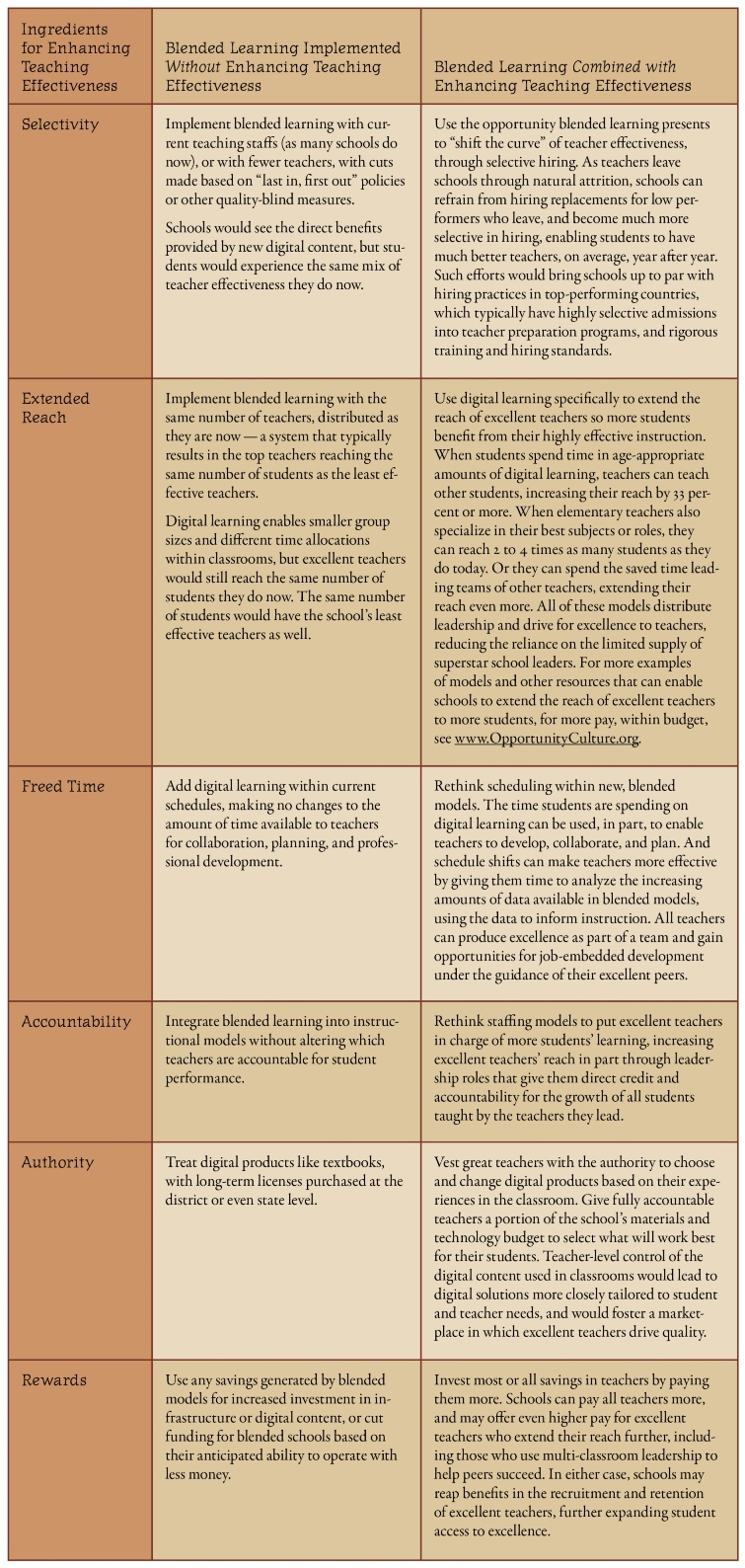Six Ingredients for “A Better Blend”
Topics

We’ve all had the experience of truly purposeful, authentic learning and know how valuable it is. Educators are taking the best of what we know about learning, student support, effective instruction, and interpersonal skill-building to completely reimagine schools so that students experience that kind of purposeful learning all day, every day.
Is there a direct link between using blended learning to expand access to excellent teachers and improving students’ learning?
Last week, Public Impact’s Sharon Kebschull Barrett and Joe Ableidinger wrote about how new staffing models that use online instruction and digital tools can help schools extend the reach of excellent teachers to more students, as discussed in A Better Blend: A Vision for Boosting Student Outcomes with Digital Learning.
As school leaders consider adding blended learning to their schools, it would be easy to leave students’ access to great teachers exactly as it is today. An elementary school with 24 classrooms, for example, could maintain these classrooms just as they are, adding banks of computers to the back of each room to enable digital learning. But if this is an average U.S. school, six of these classrooms have teachers whose students are making well under a year’s worth of growth. Twelve of the classrooms can expect a year’s growth on average, but that will not close achievement gaps and help middling students leap ahead. Only about six of those classrooms will have teachers who achieve the well-over-a-year’s-worth-of-growth that students need in today’s world. Adding digital learning may help, but it won’t alone change this underlying reality.
What could schools add to the mix so that blended learning simultaneously expands access to excellent teachers—making the difference between just a blend and a better blend? The table below shows six ingredients schools should add to whip up that better blend.
With those ingredients in mind, picture that same 24-classroom school. Its six excellent teachers now take responsibility not just for six classrooms, but for all classrooms. Some do so by reaching more students directly, working with one group of students while others learn digitally, and then swapping the groups. Others do so by leading collaborative teams of teachers who teach a whole grade level or a multi-grade group of classrooms. With students spending age-appropriate amounts of time each week in digital instruction (as little as an hour daily) supervised by trained paraprofessionals, teacher-leaders have time to co-teach with their team members, assign roles that use teachers’ strengths, provide peer development, review student data from digital learning software, and plan what’s next. The team has time to meet daily, during the school day, to analyze data, make plans, and help one another improve.
With this approach, the school needs slightly fewer teachers overall. It uses the savings to cover the cost of digital learning, but also to pay excellent teachers substantially more and all teachers somewhat more. As a result, recruiting and retaining great teachers becomes much easier. That’s a better blend.

Public Impact’s mission is to dramatically improve learning outcomes for all children in the U.S., with a special focus on students who are not served well. We are a team of professionals from many backgrounds, including former teachers. We are researchers, thought leaders, tool-builders and on-the-ground consultants who work with leading education reformers. For more on Public Impact, please visit www.publicimpact.com.




